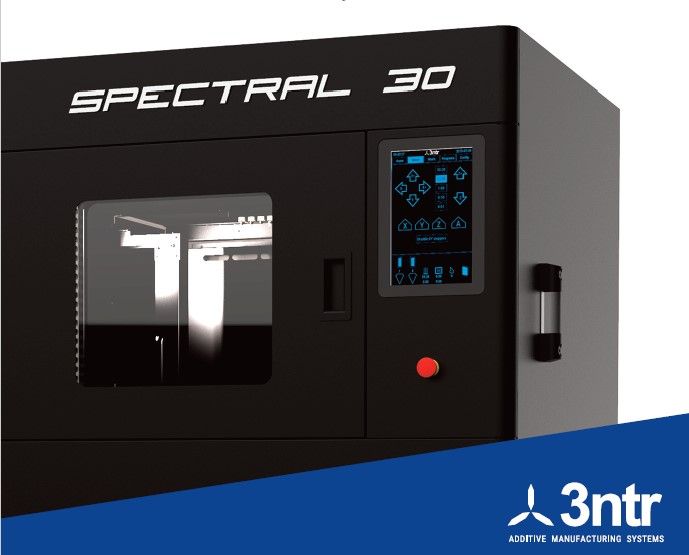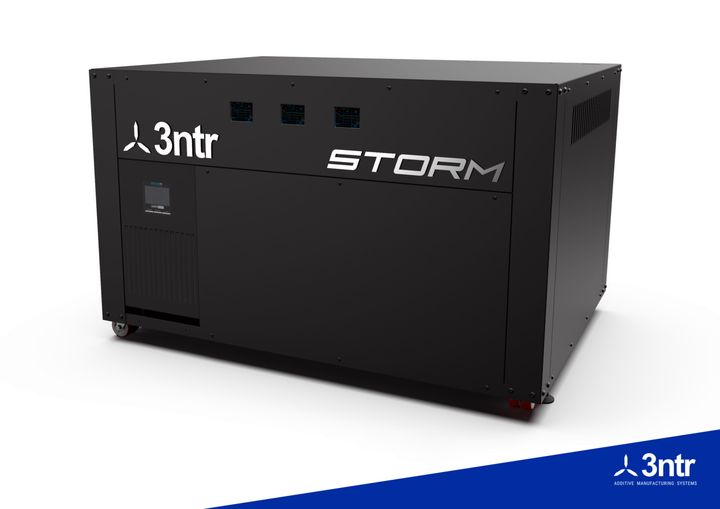
I recently had the opportunity to speak with the folks from Plural Additive Manufacturing, an Oregon-based 3D print company.
What exactly do they do? Plural Additive Manufacturing’s mission is this:
“We deliver and implement state-of-the-art 3D printing solutions that combine the power of industrial systems with open materials and custom design to provide the most versatile and cost effective rapid prototyping and functional low volume plastics manufacturing on the market.”
They’re in the business of developing 3D print solutions for clients, and lately that means taking advantage of their relationship with 3ntr, the Italian maker of high-temperature 3D printing equipment.
Using the 3ntr Spectral 30 3D Printer
In fact, Plural Additive Manufacturing is the first provider of 3ntr’s Spectral 30 unit in the USA, and they have been testing the device before sending it to a customer for production use. We took a quick look at the Spectral 30 machine in January and spoke to 3ntr’s CEO and team in April to find out how they were faring during the pandemic.
I asked Plural Additive Manufacturing how they found the machine, and was told emphatically:
“It works! And was productive within an hour.”
That’s remarkable, considering the complexity of many high-temperature 3D printers.
Currently, Plural Additive Manufacturing is 3D printing high-temperature ULTEM material on the Spectral 30, but intends on trying PEEK and PEKK a bit later.
The Spectral 30 is an interesting machine, as it provides four retractable nozzles, and that’s twice as many as usually found in an advanced high-temperature 3D printer. This allows them to use multiple materials or use multiple spools within the same print job. The filament can “autoswitch” as required during printing.
Drying High-Temperature 3D Printer Filaments

One of the most difficult aspects of 3D printing high-temperature materials like PEEK is that they are highly sensitive to humidity in the atmosphere. Thus it should be kept isolated from ambient air at all times in order to ensure high print quality.
In the 3ntr world, this is done through the use of dry cabinets. Plural Additive Manufacturing carries both of 3ntr’s solutions, the Vento and the Storm. While the Vento is designed to carry a single spool and is the best way to load filament into the Spectral 30, the Storm is a much larger unit that can accommodate multiple spools for storage, including the Vento.
I should point out that the Storm is a smart device that can accommodate up to three Vento units at a time , and also includes a webcam for remote viewing of the stored filaments. The Storm even has a combo HEPA / VOC filtration system to prevent nasty emissions from the filament in storage. This has to be one of the most sophisticated dry storage solutions on the market.
One of the Spectral 30’s unique features is its warm-up time. High temperature 3D printers must operate with very high chamber temperatures and it can take quite a while to come up to operating temperatures. Plural Additive Manufacturing says that it’s typically 2-4 hours on other equipment, but the Spectral 30 can be ready for 3D printing in only 30 minutes. That rapid warm-up time could be extremely valuable for a machine that is used intermittently and is not hot at all times, as well as saving some energy.
I asked about support material, as this is often problematic with high-temperature 3D printing: the high chamber temperatures are often well past the melting point of common soluble support materials. Plural Additive Manufacturing reps told us they are working with a German company, VXL, to obtain supplies of high-temperature-capable soluble support material. We’re quite familiar with VXL, as we spoke with them directly last fall.
For removing the support material, Plural Additive Manufacturing also sells a pair of post-processing machines from Omegasonics. These employ a combination of chemicals and agitation to rapidly remove support materials from fresh prints automatically.
3ntr Machine Availability
3ntr is based in Italy, and just happens to have their factory very near the epicenter of the pandemic in the northern part of the country. I asked whether this has affected their supply chain for the equipment, and was told they currently have around ten devices “80% complete” and are ready to be finished when the factory can reopen, which is likely soon if not already.
Meanwhile, Plural Additive Manufacturing has been showing the machine via “video tours” that allow prospective customers to examine the machine in a bit more detail than can be had by looking at web pages, including viewing actual printed samples.
Plural Additive Manufacturing says the Spectral 30 does not have quite as large a build volume as the Stratasys Fortus 450mc, but it’s a lot more affordable.
